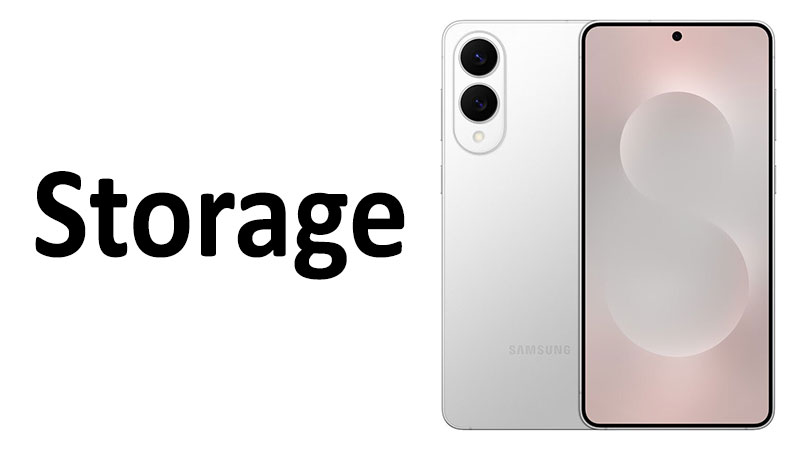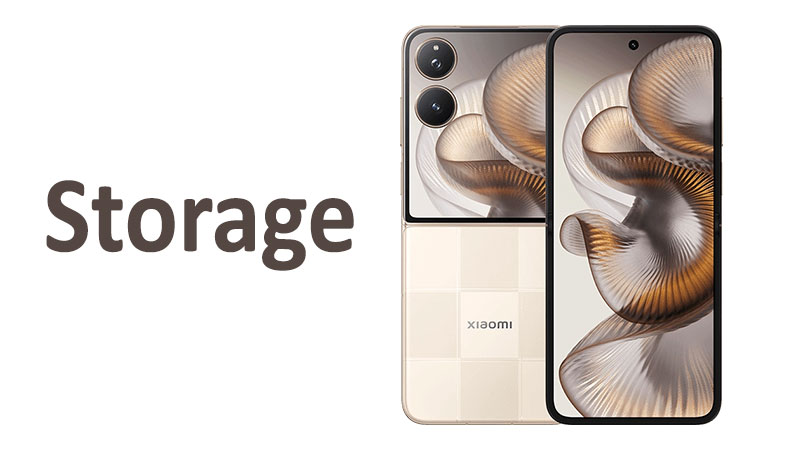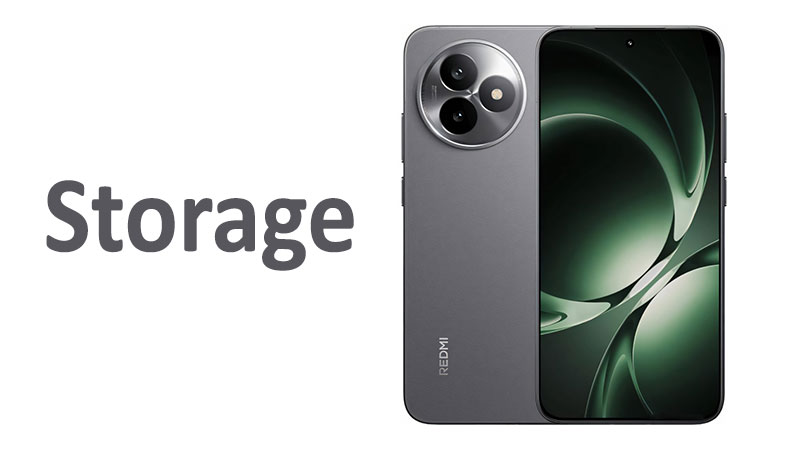Samsung Galaxy S25 Edge storage is a defining characteristic of this premium device. Choosing the correct memory configuration is essential for maximizing its flagship performance. Your storage choice directly impacts the phone’s longevity and daily functionality. This comprehensive guide explores every aspect of the S25 Edge’s internal memory system. We will analyze the available capacities and the underlying hardware technology. Understanding these crucial specifications helps you make the most informed decision possible. The S25 Edge is built for demanding users. Its storage architecture supports professional use cases and intense multimedia consumption. Therefore, a detailed review of its memory system is warranted for any serious buyer.
A Comprehensive Analysis of S25 Edge Storage Configurations
The Samsung Galaxy S25 Edge sits firmly in the ultra-premium smartphone segment. Its components are selected for maximum performance and efficiency. This commitment to power is clearly demonstrated in its generous storage and RAM setup. Samsung has eliminated the lowest capacity tier for this high-end model. This establishes a high performance floor for all S25 Edge users. The design philosophy ensures that the device can easily handle its advanced features.
Available Configurations and High-End RAM Standard
The S25 Edge offers a concise and powerful set of options for internal memory. All buyers benefit from a substantial 12GB of RAM, regardless of the storage size chosen. This high amount of RAM is critical for maintaining fluid operation. It manages the demanding parallel processes expected of a top-tier smartphone.
The available storage configurations are:
- 256GB Internal Storage with 12GB RAM
- 512GB Internal Storage with 12GB RAM
The standardization of 12GB RAM is a key differentiator. This memory allocation enables seamless multi-tasking and instantaneous app switching. It ensures that the phone’s powerful processor is never slowed down by insufficient working memory. This consistency is vital for maintaining a smooth user experience. It appeals directly to power users who frequently push their devices to the limit. The omission of a smaller 128GB model confirms the S25 Edge’s elite positioning in the market.
Specialized Comparison: S25 Edge vs. S24 Ultra Storage
The S25 Edge’s storage philosophy mirrors the industry trend among major flagships. When comparing it to the previous generation’s top model, the Galaxy S24 Ultra, certain trends emerge. The S24 Ultra often started with a 128GB option in some regions. This provided a lower entry cost. However, the S25 Edge begins at 256GB. This move reflects the increasing size of modern operating systems and high-end applications.
Furthermore, the S25 Edge’s 12GB RAM baseline is a crucial factor. Earlier models might have reserved the 12GB RAM for the higher storage tiers. By contrast, the S25 Edge makes it standard across both models. This provides a performance boost for the entry-level 256GB variant. It ensures all S25 Edge users receive a truly elite speed experience. This streamlined offering simplifies the purchase decision. It also ensures long-term viability for the hardware.
The Engine of Speed: UFS 4.0 and 12GB LPDDR5X RAM
The speed of the Galaxy S25 Edge is determined by more than just its processor. The type of storage and system memory dramatically impacts responsiveness. Samsung utilizes the most advanced memory standards available. This provides industry-leading read and write performance. These technical components are the true engine behind the phone’s speed.
Deep Dive into UFS 4.0 Performance Metrics
The Samsung Galaxy S25 Edge features Universal Flash Storage 4.0, or UFS 4.0. This is the latest and fastest standard for internal mobile storage. UFS 4.0 delivers phenomenal data transfer rates. These rates fundamentally change how quickly the phone operates.
UFS 4.0 boasts maximum sequential read speeds up to 4,200 megabytes per second (MB/s). It also achieves sequential write speeds of up to 2,800 MB/s. These figures represent a massive performance leap. They are nearly twice the speed of the previous UFS 3.1 standard. This technology is vital for handling large files efficiently. For example, editing 8K video footage directly on the phone becomes much smoother. Installing massive game updates is almost instantaneous. Furthermore, UFS 4.0 operates with greater power efficiency. This improved efficiency helps conserve battery life during intensive storage activities.
The Critical Role of 12GB RAM for Pro Users
The standardized 12GB of LPDDR5X RAM complements the speed of UFS 4.0. LPDDR5X is a low-power double data rate synchronous dynamic random-access memory. It operates at incredibly high speeds while minimizing power draw. This massive RAM capacity is necessary for demanding users.
Users who routinely run complex applications benefit greatly from 12GB RAM. This includes graphic designers editing large image files. It also covers professionals using virtual desktop applications. The RAM prevents application processes from being prematurely closed in the background. Consequently, switching back to a previous app is instant. There is no need for reloading the application state. The 12GB RAM combined with the fast UFS 4.0 storage creates a powerful performance synergy. This combination solidifies the S25 Edge as a device capable of true mobile productivity.
Comparison: UFS 4.0 Speed vs. UFS 3.1
The difference between UFS 4.0 and UFS 3.1 is significant in a professional context. UFS 3.1 is fast, offering read speeds around 2,100 MB/s. Write speeds hover near 1,200 MB/s. However, UFS 4.0 significantly increases this performance ceiling.
The enhanced speed translates directly to user experience. Consider a large system update. The UFS 4.0 phone downloads the data and writes it to memory much faster. This reduces the time the user spends waiting for the phone to reboot. Similarly, opening a large multi-layered Photoshop file happens almost immediately with UFS 4.0. While both standards are high-end, UFS 4.0 is demonstrably superior. It is the gold standard for current flagship device storage. The S25 Edge benefits entirely from this state-of-the-art technology.
Capacity Planning: Choosing Between 256GB and 512GB
The S25 Edge buyer has a straightforward choice between two large capacities. The decision is not about minimum viability but rather about future-proofing. Both 256GB and 512GB offer ample space. Buyers must determine how much overhead they require for their digital lives. This is particularly important because the storage cannot be expanded later.
The 256GB Baseline: Premium Minimum
The 256GB storage option serves as the minimum entry point for the S25 Edge. It is far from a budget choice. This capacity provides substantial room for most high-end users.
Pros and Cons of 256GB
Pros:
- It offers the lower purchase price of the two available models.
- The capacity is easily sufficient for heavy media consumption and gaming.
- It works well for users who regularly use cloud services for backup.
- The phone still includes the high-performance UFS 4.0 and 12GB RAM.
Cons:
- Heavy 8K video recording will consume this space quickly.
- Dedicated content creators may find this capacity restrictive within a year.
- Users must be diligent about transferring or deleting old files occasionally.
Who Should Choose 256GB?
The 256GB configuration is ideal for the enthusiastic mobile gamer. It is also perfect for the typical flagship consumer. This user downloads many applications and takes hundreds of photos per month. They might record a moderate amount of 4K video. However, they consistently offload their older media to a computer or cloud storage. This capacity offers a fantastic blend of high performance and relative affordability. It provides a generous amount of space for a truly premium experience.
The 512GB Maximum: Ultimate Digital Vault
The 512GB capacity is the maximum storage offering for the S25 Edge. It is designed for those who refuse to compromise on space. This configuration is the ultimate digital vault.
Pros and Cons of 512GB
Pros:
- It provides massive storage, eliminating space concerns for the phone’s lifespan.
- This capacity is essential for professional video recording and editing workflows.
- The long-term resale value is maximized with this top-tier storage option.
- It allows users to download entire seasons of shows for offline viewing.
Cons:
- It comes with the highest initial purchase cost.
- Many average users will not utilize this entire space. This leads to wasted investment.
Who Should Choose 512GB?
The 512GB S25 Edge is designed for the data maximalist. This includes professional photographers and videographers who require raw file storage. It also suits power users who download extensive media libraries for offline access. Furthermore, it is the best choice for users who simply want to set it and forget it. They never want to worry about deleting files. This capacity offers unparalleled freedom and longevity. It is the definitive choice for the S25 Edge power user.
Buyer’s Essential Guide and Longevity
The S25 Edge is a substantial investment. Therefore, buyers must approach the storage decision with careful consideration. Since there is no physical way to expand the storage later, a smart initial choice is paramount. Understanding the trade-offs is crucial for long-term satisfaction.
The Trade-off: No Expandable Storage
The Samsung Galaxy S25 Edge does not include a microSD card slot. This follows the trend of high-end Samsung devices. This decision is based on a performance trade-off.
Internal UFS 4.0 storage is many times faster than any external memory card. The physical design of the phone is also streamlined without the slot. However, this absence creates a permanent storage limitation. Buyers must treat their selected capacity as the absolute maximum. There is no fallback option for cheap, supplemental space. This is the single most important factor in the purchasing decision. If you are a heavy data user, always size up to the 512GB option. The extra cost provides long-term flexibility and convenience.
Future-Proofing for the Modern Flagship User
Future-proofing involves ensuring the phone remains functional and fast for years to come. The S25 Edge’s storage architecture is inherently future-proof in terms of speed. UFS 4.0 and 12GB RAM will remain top-tier for a long time. However, capacity is the primary constraint.
Modern applications are constantly growing in size. High-resolution textures for games demand more storage space. Similarly, photo and video quality continue to increase. The file sizes keep pace with this trend. Therefore, the longevity of your phone depends on your storage choice. A 256GB model may feel sufficient today. However, it might feel restrictive in two or three years. Choosing the 512GB variant is a proactive move. It ensures your phone can absorb future data bloat without requiring constant management. This future-proofing minimizes user effort and maximizes device utility over its full lifespan.
Pros, Cons, and Key Takeaways
The Galaxy S25 Edge offers a highly advanced storage solution. It prioritizes speed and raw capacity over flexibility. Analyzing its advantages and disadvantages provides a clearer perspective for the potential buyer.
Pros of the S25 Edge Storage System
The S25 Edge memory setup boasts several significant advantages for high-end users.
- Elite Speed: UFS 4.0 storage ensures the fastest possible read and write speeds available on a smartphone today.
- Guaranteed Performance: The universal 12GB RAM across both models guarantees zero lag during intense multi-tasking.
- High Base Capacity: The 256GB minimum capacity comfortably meets the needs of most demanding users.
- High Efficiency: UFS 4.0 is more power-efficient than older standards. This contributes positively to overall battery life.
Cons of the S25 Edge Storage System
The focus on speed and integrated design introduces one major limitation.
- Fixed Capacity: The lack of a microSD card slot means the user is permanently locked into their initial storage choice. This necessitates careful planning before purchase.
Crucial Takeaways for the Buyer
These final points summarize the most critical factors for S25 Edge buyers considering storage.
- Assume No External Storage: Never rely on offloading data to a memory card. Buy the capacity you absolutely need upfront.
- Prioritize 512GB for Video: If you record high-resolution video weekly, the 512GB model is the only practical option. Video files consume space exponentially faster than apps or photos.
- Speed is Consistent: Rest assured that both the 256GB and 512GB models offer identical, top-tier performance speeds. The UFS 4.0 and 12GB RAM are standard across the board.
- Account for System Files: Remember that the Android operating system and Samsung’s software pre-occupy a substantial portion of the storage. Factor this reduction into your capacity calculations.
Conclusion
The Samsung Galaxy S25 Edge storage configuration is designed for uncompromising performance. The commitment to a minimum of 256GB storage and a standard 12GB of LPDDR5X RAM sets a high bar. Furthermore, the inclusion of UFS 4.0 ensures lightning-fast data handling across all tasks. This combination creates a truly future-proof and responsive mobile platform.
The core of the buyer’s dilemma centers on capacity. The 256GB model is sufficient for most advanced users who manage their data with cloud services. However, the 512GB option is a superior choice for content creators and those who value absolute freedom. It removes any anxiety about running out of space for years. The absence of a microSD slot forces this capacity decision to be final. Therefore, careful consideration of long-term usage habits is mandatory. The S25 Edge storage system delivers exceptional speed and ample space. This makes it an outstanding choice for any user seeking a top-tier mobile experience.
Frequently Asked Questions (FAQ)
Does the Samsung Galaxy S25 Edge support expandable storage?
No, the Samsung Galaxy S25 Edge does not support expandable storage. It does not have a dedicated microSD card slot.
What is the amount of RAM included in the S25 Edge?
The S25 Edge includes a generous 12GB of RAM with both the 256GB and 512GB storage models.
Is UFS 4.0 the fastest storage available?
Yes, UFS 4.0 is currently the fastest commercial standard for internal mobile storage. It offers significantly quicker read and write speeds than UFS 3.1.
Which S25 Edge model should a 4K video creator buy?
A 4K video creator should strongly consider the 512GB model. High-resolution video files consume storage space very quickly.
What is the benefit of having 12GB of RAM on the S25 Edge?
The 12GB of RAM ensures superior multi-tasking performance. It allows many demanding applications to run simultaneously without system slowdowns or forced reloads.



